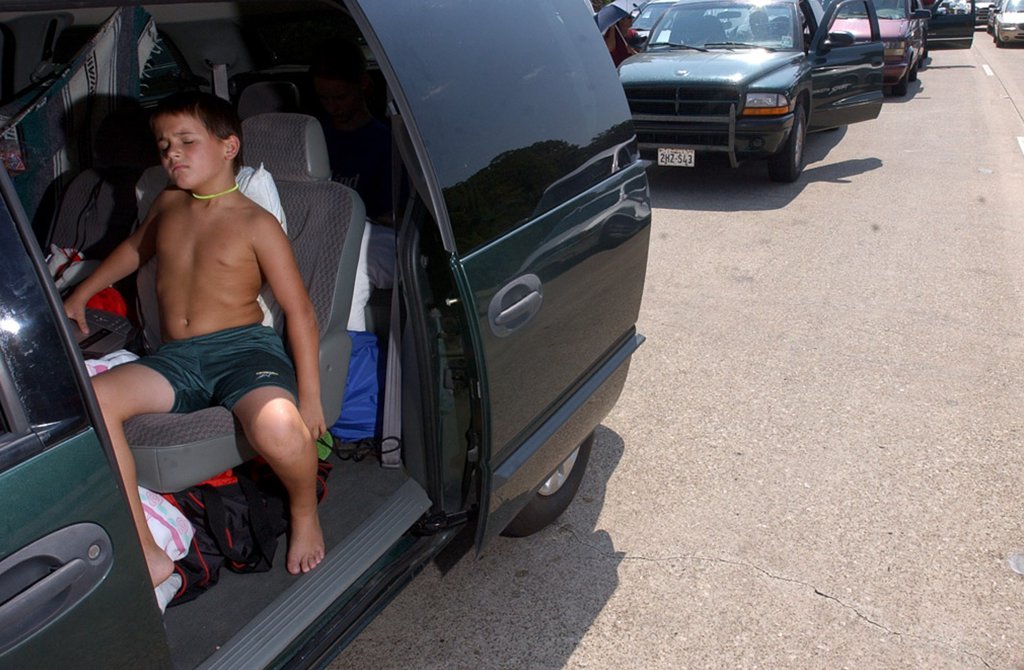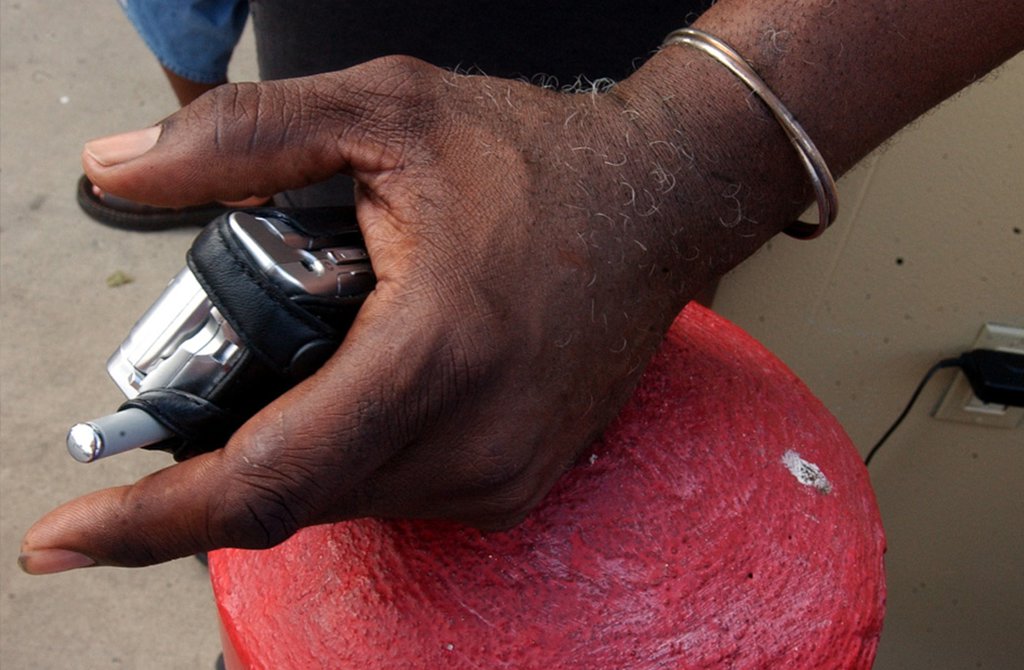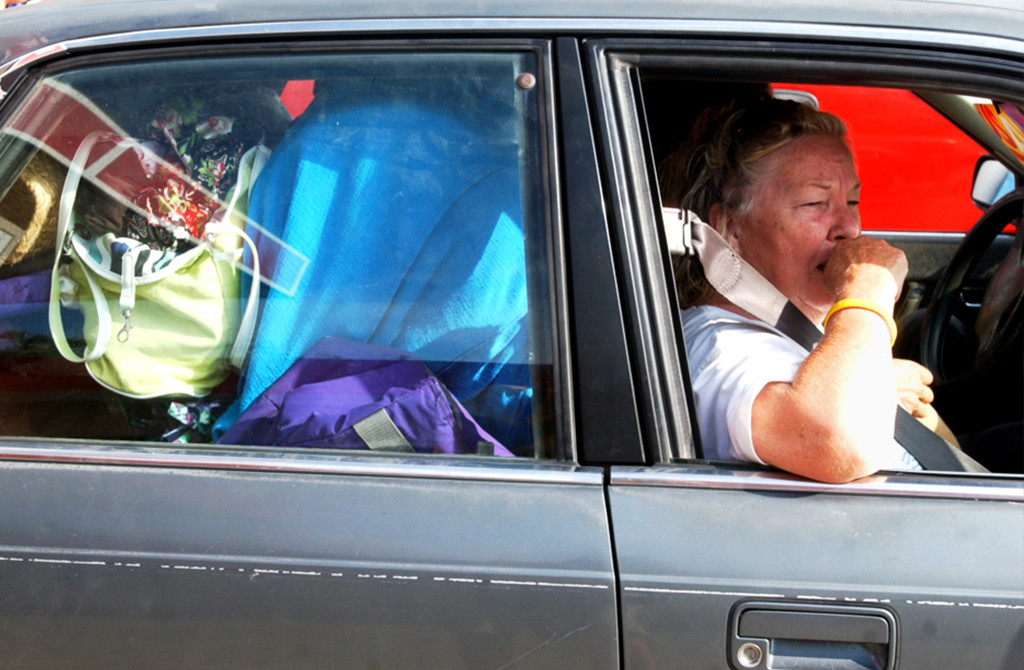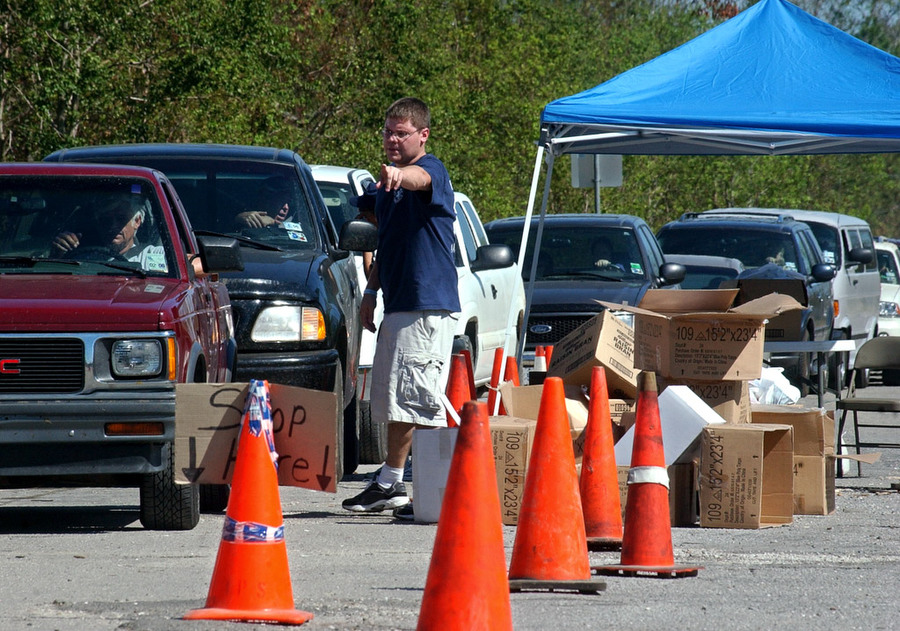By the time Hurricane Rita churned erratically through the Gulf of Mexico, officials in Texas’ biggest cities were already hip deep in evacuees and disaster fatigue. For more than three weeks in September 2005, they had frantically placed what felt like half of Louisiana into emergency shelters across the state. From the Astrodome in Houston to the Austin Convention Center to Dallas’ Reunion Arena, Hurricane Katrina evacuees were everywhere.
Then Katrina's sister, Rita, followed her into the Gulf, and Texas officials suddenly had to focus on getting their own residents out of harm's way. Beyond the motorist-choked highways, there was another evacuation crisis underway involving some of the neediest Texans: the elderly and disabled.
"Because we had already responded to Katrina, we had a bunch of Louisianans we are taking care of and here comes Rita and we were just overwhelmed," said Glen Bason, director of executive and staff operations at the Texas Department of Aging and Disability Services, the state's nursing home and assisted-living regulator. "We weren't prepared for it."
Buses were tapped late to evacuate Gulf Coast nursing home residents, with one such trip ending in tragedy. Other disabled and elderly residents were left behind in several coastal cities as emergency planners had no clear method of determining their location. And overlapping responsibilities among state and local agencies caused confusion during evacuation efforts.
But local and state officials say they have revamped their operations to avoid the pitfalls that occurred 10 years ago. New strategies include a state registry that helps emergency teams pinpoint fragile populations during a disaster. And agencies now work in a more streamlined fashion to avoid duplicating resources.
"I think we're a lot better since Rita," said Houston Police Department Senior Officer Doug Anders, who now works as special projects coordinator with the department’s mental health division. "We're smarter. We've seen the problems that happened there and tried to solve those problems.”
Time will tell whether the new strategies and the State of Texas Emergency Assistance Registry, or STEAR, which is maintained by the Texas Department of Public Safety, will be clear difference-makers in helping officials weather a crisis on the level of Rita. But smaller tests, like this year’s statewide flooding, proved it to be a valuable resource for local emergency managers.
An Inadequate Response
Efforts to transport elderly and disabled residents during Rita were far from refined. Late in the evacuation, school and charter buses ferried nursing home residents who used oxygen tanks and other medical devices. Most made it to their destinations with little more to show for their tough journeys than exhaustion.
Others were not so lucky.

South of Dallas, a bus carrying 38 passengers from the Brighton Gardens nursing home near Houston was into its 15th hour on the road when a fire broke out, killing 23 people. And two days after Rita made landfall east of Sabine Pass, the Texas State Guard rescued nearly 100 nursing home residents from a makeshift shelter inside an elementary school 40 miles north of Beaumont.
Left behind in several coastal cities were many elderly Texans living on their own, residents who were no less needy but invisible to local emergency planners and police before Rita's landfall. These residents lived in assisted-living centers, apartments and other homes.
"Local response partners were not aware of what type of [facilities] were in their areas," recalled Russell Cook, the emergency service coordinator for the state’s Department of Aging and Disability Services.
Anders added that some local agencies didn’t have adequate plans of action for evacuating assisted-living centers, nursing homes and other facilities with elderly and disabled residents.
"They didn't look at the safety factors in transporting them," he said.
Bureaucratic Tangle
The state’s own strategies impeded the evacuation of Texas' most needy even more. Relatives could not easily find people transported by the state, and state health officials' method of classifying who needed urgent medical care hindered a swift triage.
"During the Katrina-Rita response, public health and medical roles were not clearly defined," said Christine Mann, spokeswoman for the Texas Department of State Health Services.
There were also several official checklists, slowing down the classification of older and medically needy people who had to be transported and confusing shelter workers once those populations arrived.
"It was too complicated," said Jeff Hoogheem, deputy director of health emergency preparedness and response for the state health department.
During Rita, a 0-to-5 scale was used to classify those with health problems before they boarded a bus, with 5 being the most serious. But a lack of a hard-and-fast classification meant some residents were misclassified and taken to the wrong shelter. Some residents had to be transported a second time, to a health care facility.
"If we can get them to the right shelter the first time, that's best," Hoogheem said.
What's Changed
Ten years after Rita, Texas' approach to disaster planning has undergone a makeover, starting with a better method of locating those with health problems.
The state created STEAR, a registry for disabled and elderly residents who would need help in an evacuation. It lets state and local officials know where these vulnerable populations live. Residents can register online or by calling the state's 2-1-1 social services line. During an emergency, local officials can sort and download the registered names and addresses so they can plan to get those people out.
"In theory, local jurisdictions will pull that information in their area," explains Michael Walter, a spokesman for Houston's Office of Emergency Management.
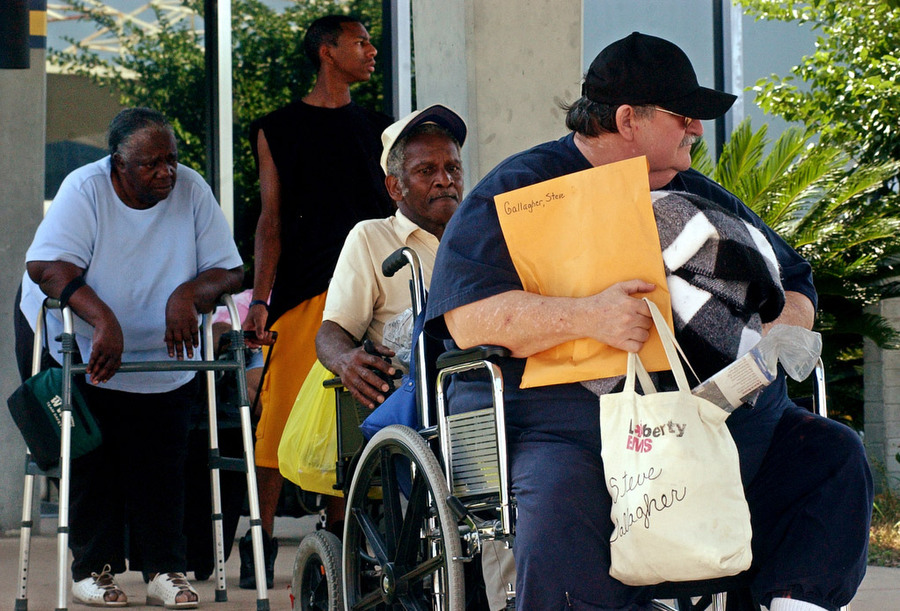
The STEAR is not only for individuals. The state's nursing homes and assisted-living centers are now required to register with STEAR so that local officials don't waste time tracking down each facility in an emergency.
Using the registry helps cities plan ahead for distributing vehicles and ambulances during a crisis.
And the system allows government officials to direct elderly and disabled residents to leave before the heavy rush of cars hits the roads. Those with medical equipment need to move ahead of those who leave in their own cars.
"They need more time," said Sharon Nalls, deputy emergency manager for the city of Houston.
The STEAR isn’t foolproof; it’s not always easy to get such residents registered, Walter said.
"One of the issues we run into with people with disabilities is they don't trust telling people they have a disability because they feel like they will be victimized," he said.
So Houston turned to nonprofits like the United Way and Meals on Wheels to help get those targeted populations registered.
There's also been an upgrade to the fleet of emergency vehicles used to aid evacuations.
In 2005, there was not one large ambulance bus, known as an "ambus," to be found in Texas. These buses can carry more than a dozen evacuees on stretchers at a time.
"That's an asset that didn't exist during Rita," Nalls said.
Texas now has ambuses in each of the state’s 22 designated trauma service areas. The state has also developed ambulance "strike" teams of five ambulances and a supervisor that can be deployed to an area for a more targeted medical response to a disaster area.
Texas has better streamlined its operations. During Rita, the state operated two parallel emergency response centers: the state operations center overseen by the Texas Department of Emergency Management and the state health department's emergency support center. The structure confused both state workers and local officials.
Today the health department's emergency response team is folded into the state operations center.
And the 0-to-5 triage scale used by the health department during Rita is gone.
Anyone boarding a state-chartered vehicle in an evacuation will be classified as either medical or general population, said Hoogheem, with the state health department.
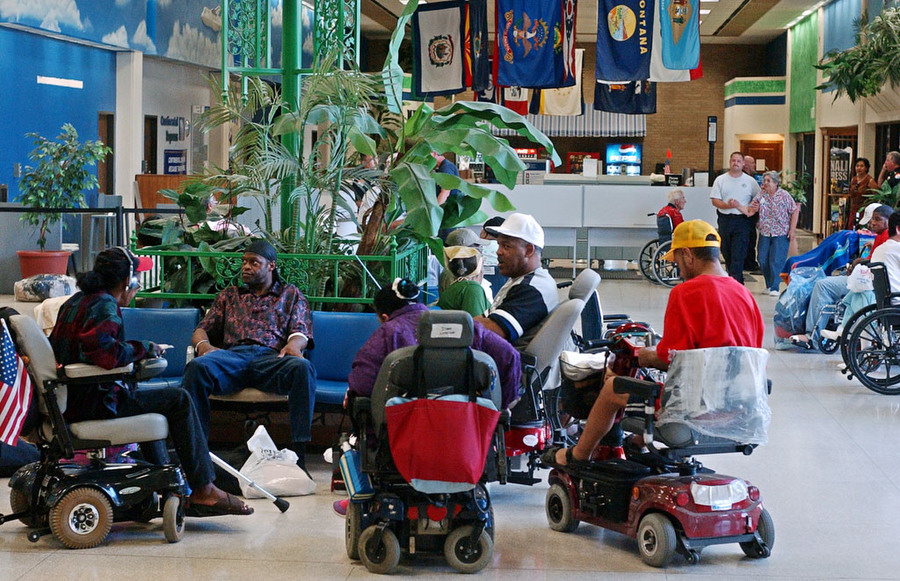
Other major tweaks include better tracking of nontraditional housing for the elderly and disabled populations, like boarding homes.
Two years ago, Houston began requiring boarding homes to register with the city. These houses typically have four to five rooms, with each room rented to elderly or disabled residents. The registration requirements help police identify the residents and their owners when there are emergencies like storm evacuations.
Anders of the Houston Police Department recalled that during Hurricane Ike in 2008, boarding home owners often left their residents to fend for themselves.
"No water and no lights and the management left them," Anders said. "That was the worst."
But with the boarding home registry, owners can be contacted immediately during disasters, he said.
What's Left To Do?
For Anders and other emergency planners, there’s still much to be done to make evacuations less stressful and dangerous.
Anders would like to see apartment owners check in more closely with their elderly and disabled populations and their caretakers, so that when they have to move, they will.
"If you can get them to work with their apartment community, that will decrease the relocation stress," he said.
But officials say it’s clear that state and local agencies are better-positioned for the next major evacuation.
“Is it a perfect world?” Anders said. “No but we're getting there."
Stories written by The Texas Tribune are available for republication. To republish this story, contact Natalie Choate.
The Texas Tribune and the Beaumont Enterprise partnered for a project looking at the 2005 evacuation of Southeast Texas ahead of Hurricane Rita and whether a similar catastrophe can be avoided when the next big storm hits. This website was developed and designed by Ryan Murphy and Ben Hasson.






